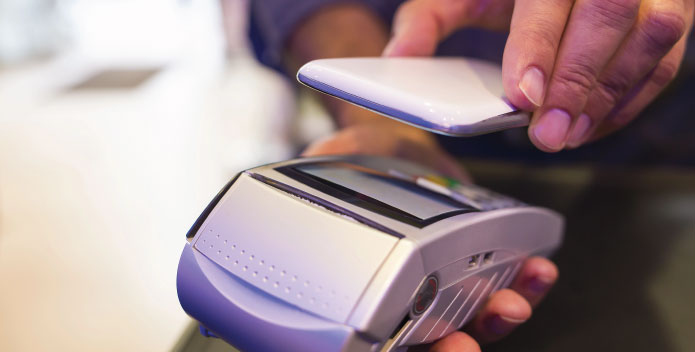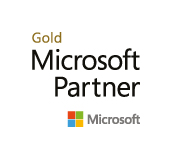
How do You Shop – A Guide to Alternative Payment Methods
Published: 20 November 2024
With the festive season fast approaching, many of us will be thinking about Christmas shopping, whether that’s in-store or online.
The retail landscape has changed dramatically in the past decade, and how we pay for goods is an example of how much things have advanced.
No longer are the only options just credit or debit cards – retailers now offer wider payment options to encourage consumers to purchase from them. We take a closer look at the popular APMs (‘alternative payment methods’) that are now available and weigh up the pros and cons.
Apple Pay and Google Pay
These are contactless ways of paying that involves a mobile device such as a phone, smartwatch or tablet. Mobile payments are completed using a digital wallet or mobile app, and can be linked to bank accounts, credit cards, debit cards, and other payment methods. Apple and Google Pay are useful if you’ve left your wallet or purse at home or the office and you need to make a purchase but don’t have your physical bank card. The downside is if your phone or watch loses power, you would be without a way to pay and if your device is lost or stolen, there can be a security risk if it is not securely locked.
These are contactless ways of paying that involves a mobile device such as a phone, smartwatch or tablet. Mobile payments are completed using a digital wallet or mobile app, and can be linked to bank accounts, credit cards, debit cards, and other payment methods. Apple and Google Pay are useful if you’ve left your wallet or purse at home or the office and you need to make a purchase but don’t have your physical bank card. The downside is if your phone or watch loses power, you would be without a way to pay and if your device is lost or stolen, there can be a security risk if it is not securely locked.
Klarna
Known as a BNPL (‘buy now pay later’), Klarna is a service that allows you to buy items and spread the payments in instalments. There are other BNPLs, such as Splitit, although Klarna is popular with UK retailers. Klarna is a regulated credit product and is useful for people who don’t want to pay in full at the time of purchase. However, you need to make sure you can keep up with the instalments as there are fees for late payment. BNPLs can also encourage overspending and debt, if not managed properly.
Known as a BNPL (‘buy now pay later’), Klarna is a service that allows you to buy items and spread the payments in instalments. There are other BNPLs, such as Splitit, although Klarna is popular with UK retailers. Klarna is a regulated credit product and is useful for people who don’t want to pay in full at the time of purchase. However, you need to make sure you can keep up with the instalments as there are fees for late payment. BNPLs can also encourage overspending and debt, if not managed properly.
Amazon Pay
More retailers are offering Amazon Pay as a payment option. Not to be confused with Amazon Prime (which is a subscription service), Amazon Pay lets you use the payment methods already linked with your Amazon account to make payments for goods or services on third-party websites. Amazon doesn’t share your full credit card, debit card, or bank account number with any third-party sites, so your data and bank details are protected. However, it’s not an option for those who don’t have an Amazon account and it is not universally accepted by all retailers.
More retailers are offering Amazon Pay as a payment option. Not to be confused with Amazon Prime (which is a subscription service), Amazon Pay lets you use the payment methods already linked with your Amazon account to make payments for goods or services on third-party websites. Amazon doesn’t share your full credit card, debit card, or bank account number with any third-party sites, so your data and bank details are protected. However, it’s not an option for those who don’t have an Amazon account and it is not universally accepted by all retailers.
Shopify
Although technically not a payment option, more online retailers are using Shopify as an ecommerce platform to sell their goods through. If you buy from a retailer using Shopify, it will link to your chosen payment method but it’s worth remembering that some retailers only send notifications as to the status of your order via Shopify. This means you will need to set up a Shopify account to keep track of your purchase, which adds an extra layer of administration.
Although technically not a payment option, more online retailers are using Shopify as an ecommerce platform to sell their goods through. If you buy from a retailer using Shopify, it will link to your chosen payment method but it’s worth remembering that some retailers only send notifications as to the status of your order via Shopify. This means you will need to set up a Shopify account to keep track of your purchase, which adds an extra layer of administration.
PayPal
PayPal is essentially a pre-paid account where you can store money for future transactions. It is linked to your bank account or credit card and PayPal keeps all your information secure, which means that when you send a payment, the recipient doesn’t receive your financial details. PayPal is particularly useful if you don’t have a credit card but want to buy things safely online. However, there can be fees for international transactions that involve currency conversions.
PayPal is essentially a pre-paid account where you can store money for future transactions. It is linked to your bank account or credit card and PayPal keeps all your information secure, which means that when you send a payment, the recipient doesn’t receive your financial details. PayPal is particularly useful if you don’t have a credit card but want to buy things safely online. However, there can be fees for international transactions that involve currency conversions.
REPORT AN INCIDENT
To access the Lifeline IT support portal and log an incident, login below.
STAY UPDATED
Sign up to our newsletter for informative news about the IT and technology landscape
Offices
Head Office
Unit 8 Stirling Industrial Centre, Stirling Way,
Borehamwood, Herts, WD6 2BT
Borehamwood, Herts, WD6 2BT
European Office
3rd Floor, Rokin 92-96, 1012 KZ Amsterdam
Regional Office
Trinity Court, Trinity Street, Peterborough, PE1 1DA



Copyright © 2025 Lifeline IT Solutions Ltd. All rights reserved.|Website Design & Development by Viridian Partnership
